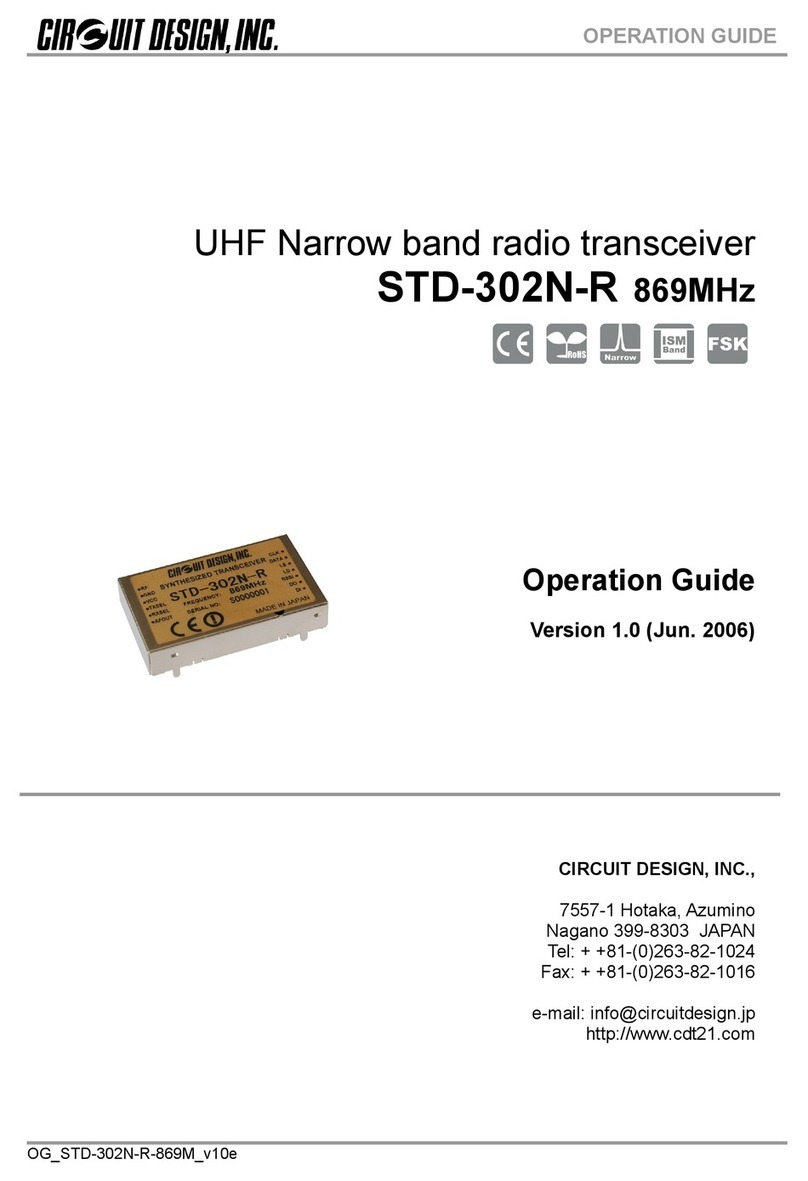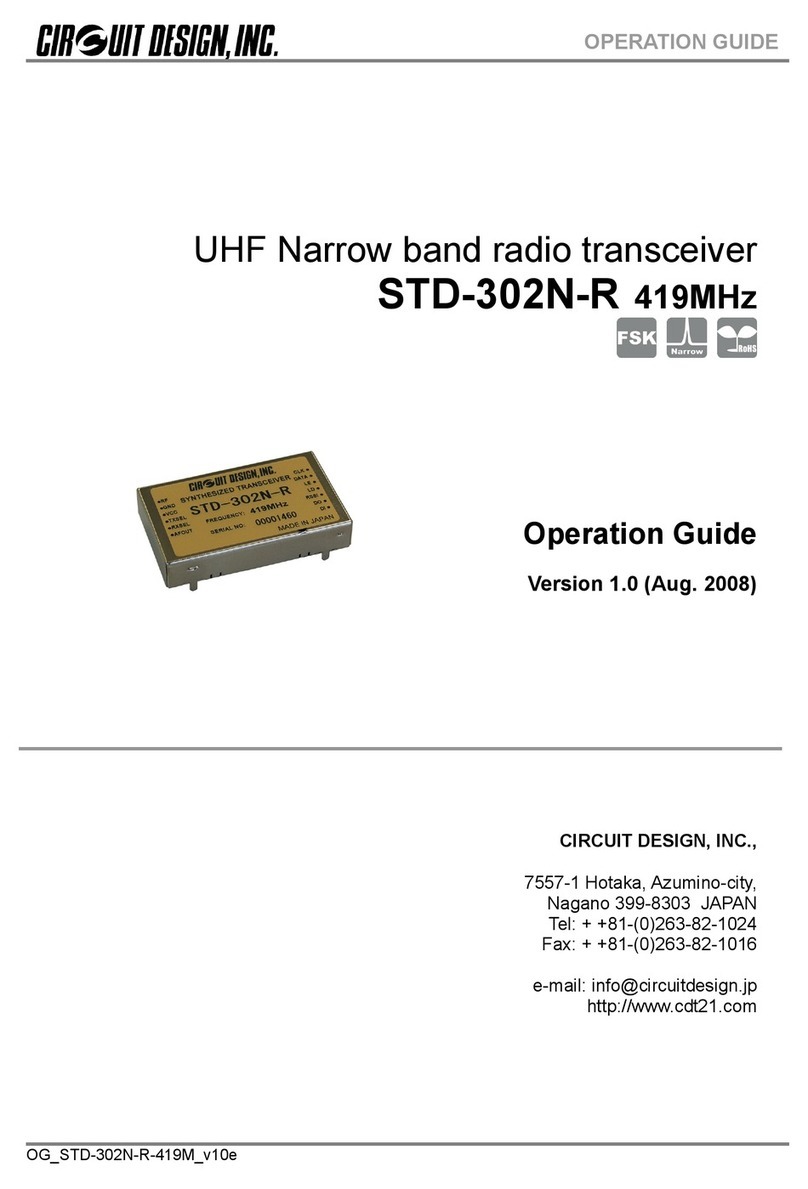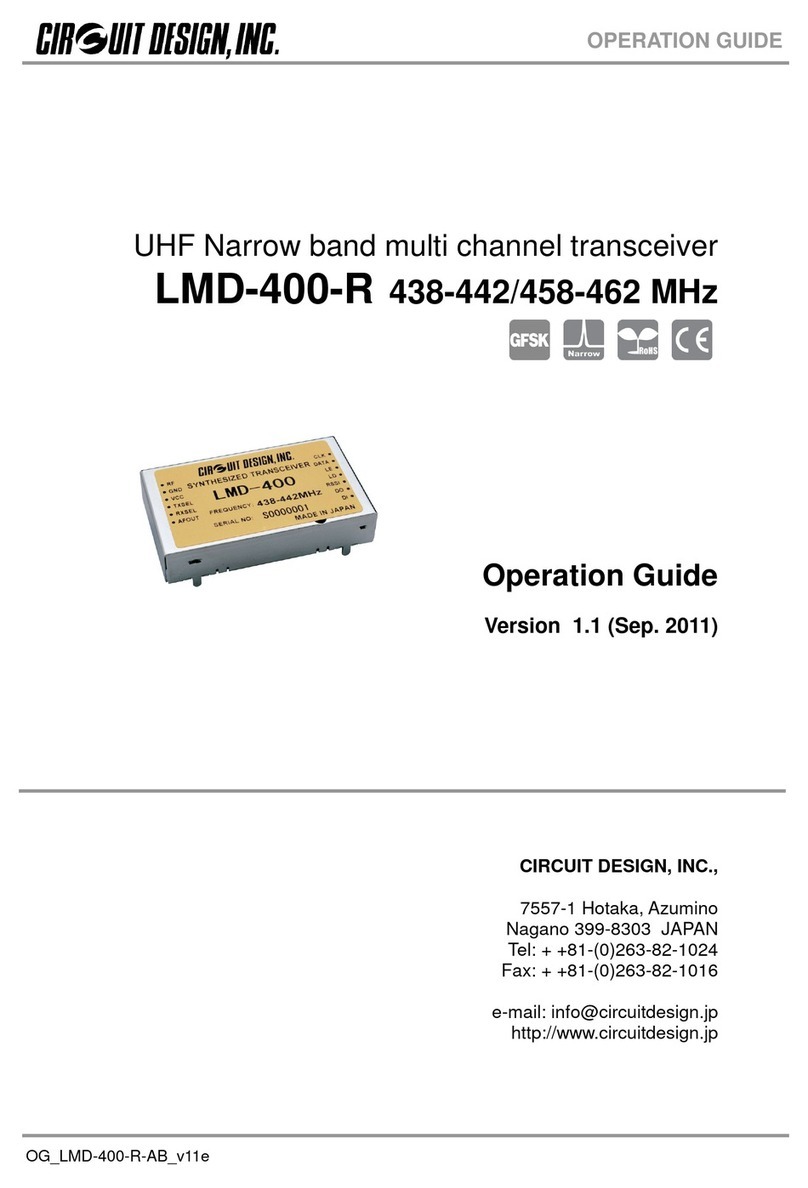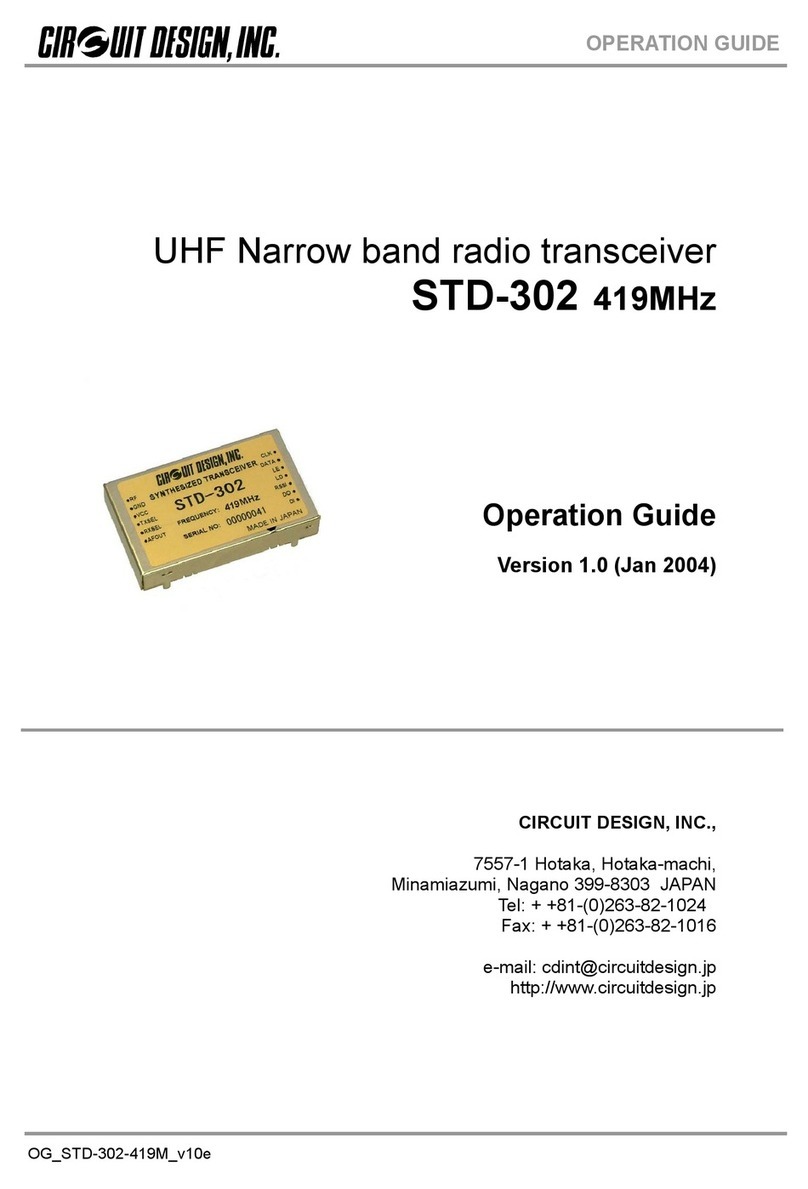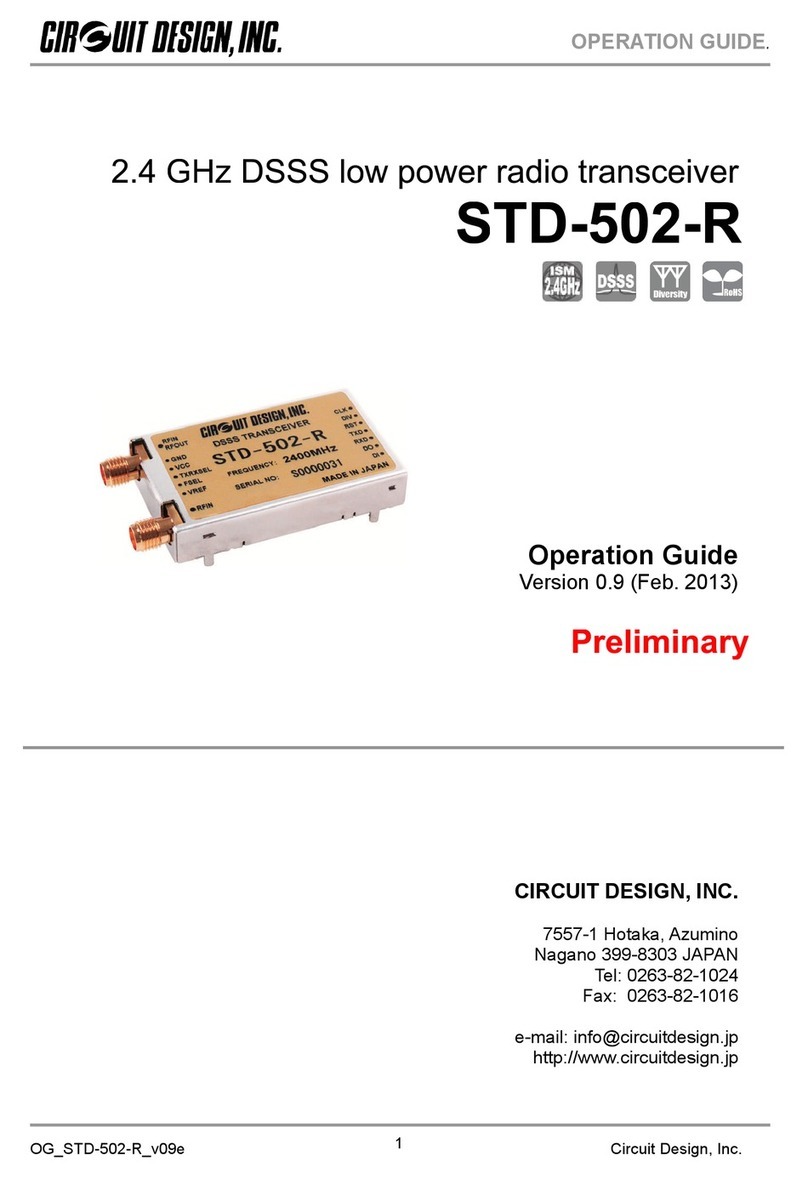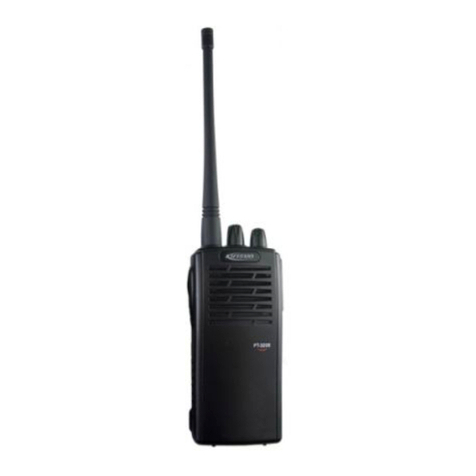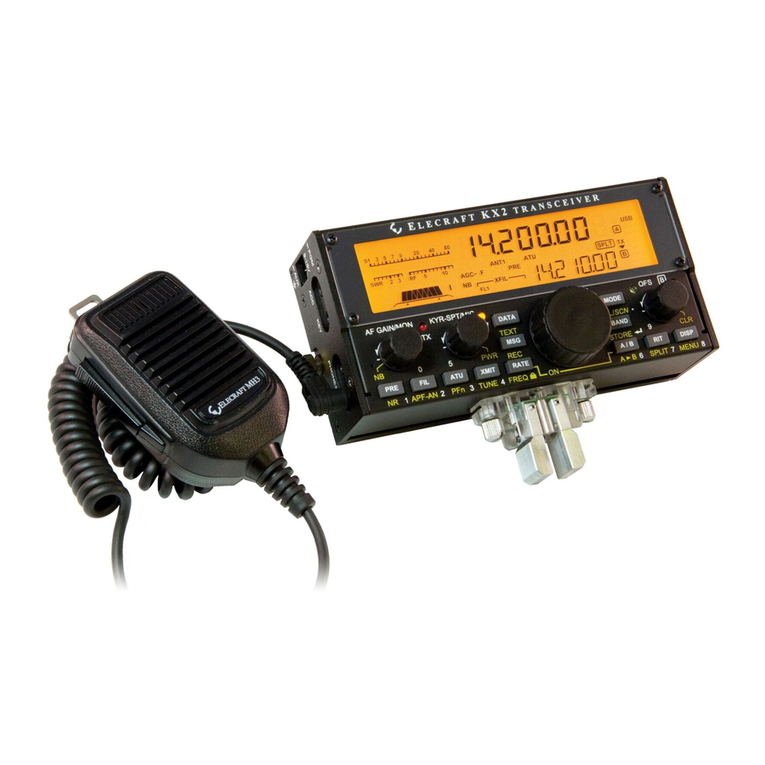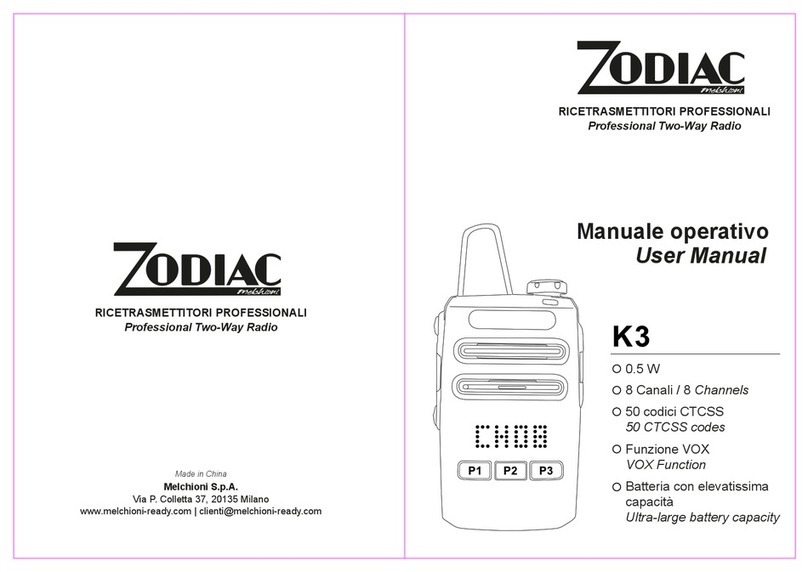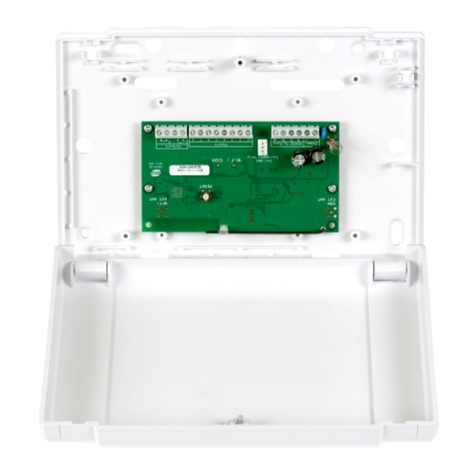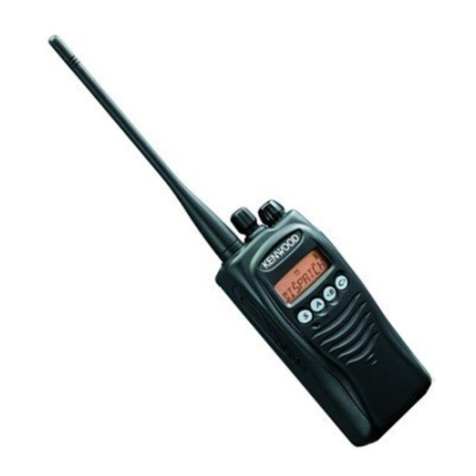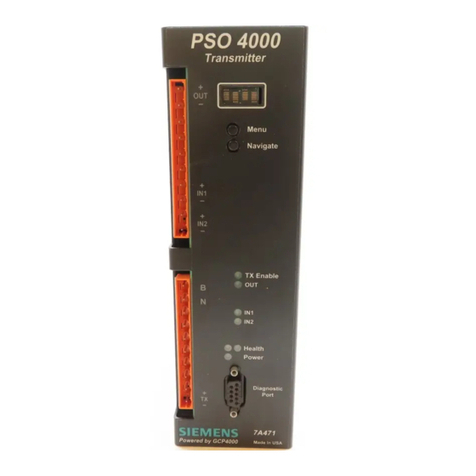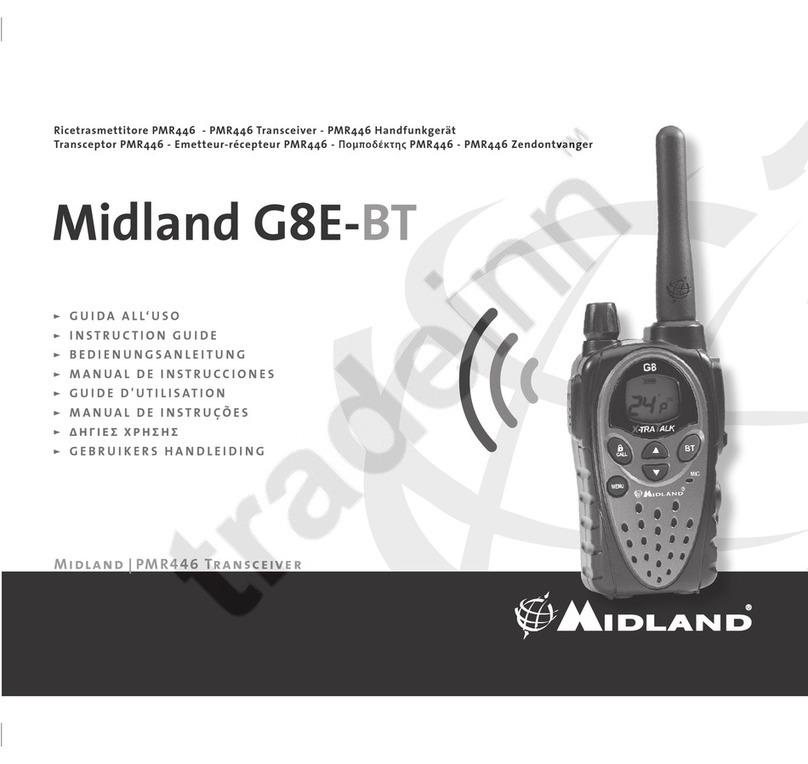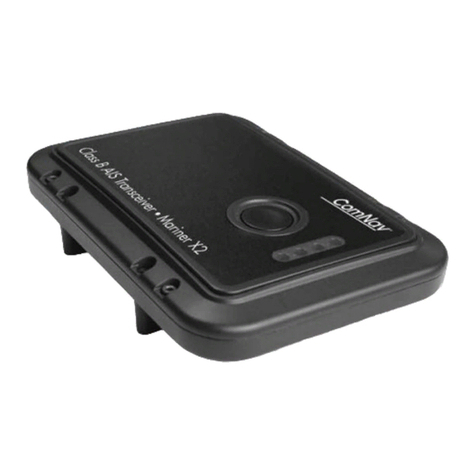2
Precautions during usage
Caution
As the radio module communicates with electronic radio waves, there are cases where transmission will be
temporarily cut off in accordance with the surrounding environment and method of usage. The manufacturer is
exempt from all responsibility relating to damage to personnel or other equipment and other secondary damage.
Do not use the equipment within the vicinity of devices that may malfunction as a result of electronic radio waves
from the radio module.
The manufacturer is exempt from all responsibility relating to secondary damage for the operation, performance and
reliability of equipment connected to the radio module.
Communication performance will be affected by the surrounding environment, so communication tests should be
carried out before actual use.
Ensure that the power supply for the radio module is within the specified rating. Short circuits and reverse
connections may result in overheating and damage and must be avoided at all costs.
Ensure that the power supply has been switched off before attempting any wiring work.
The case is connected to the GND terminal of internal circuit, so do not contact the '+' side of the power supply
terminal to the case.
When batteries are used as the power source, avoid short circuits, recharging, dismantling, and pressure. Failure to
observe this may result in the outbreak of fire, overheating and damage to the equipment. Remove the batteries when
the equipment is not to be used for a long period of time. Failure to observe this may result in battery leaks damaging
the equipment.
Do not use this equipment in vehicles with the windows closed, in locations where it is subject to direct sunlight, or
in locations with extremely high humidity.
The radio module is neither waterproof nor splash proof. Ensure that it is not splashed with soot or water. Do not use
the equipment which water or other foreign objects enter the case.
Do not drop the radio module or otherwise subject it to strong shocks.
Do not subject the equipment to condensation (including moving it from cold locations to locations with a dramatic
increase in temperature.)
Do not use the equipment in locations where it is likely to be affected by acid, alkalis, organic agents or corrosive
gas.
Do not bend or break the antenna. Metallic objects placed in the vicinity of the antenna will have a great effect on
communication performance. As far as possible, ensure that the equipment is placed well away from metallic
objects.
The GND for the radio module will also affect communication performance. If possible, ensure that the case GND
and the circuit GND are connected to a large GND pattern.
Warning
Do not take a part or modify the equipment.
Do not remove the product label (the label adhering to the upper surface of the module.) The use of modules from
which the label has been removed is prohibitted.

